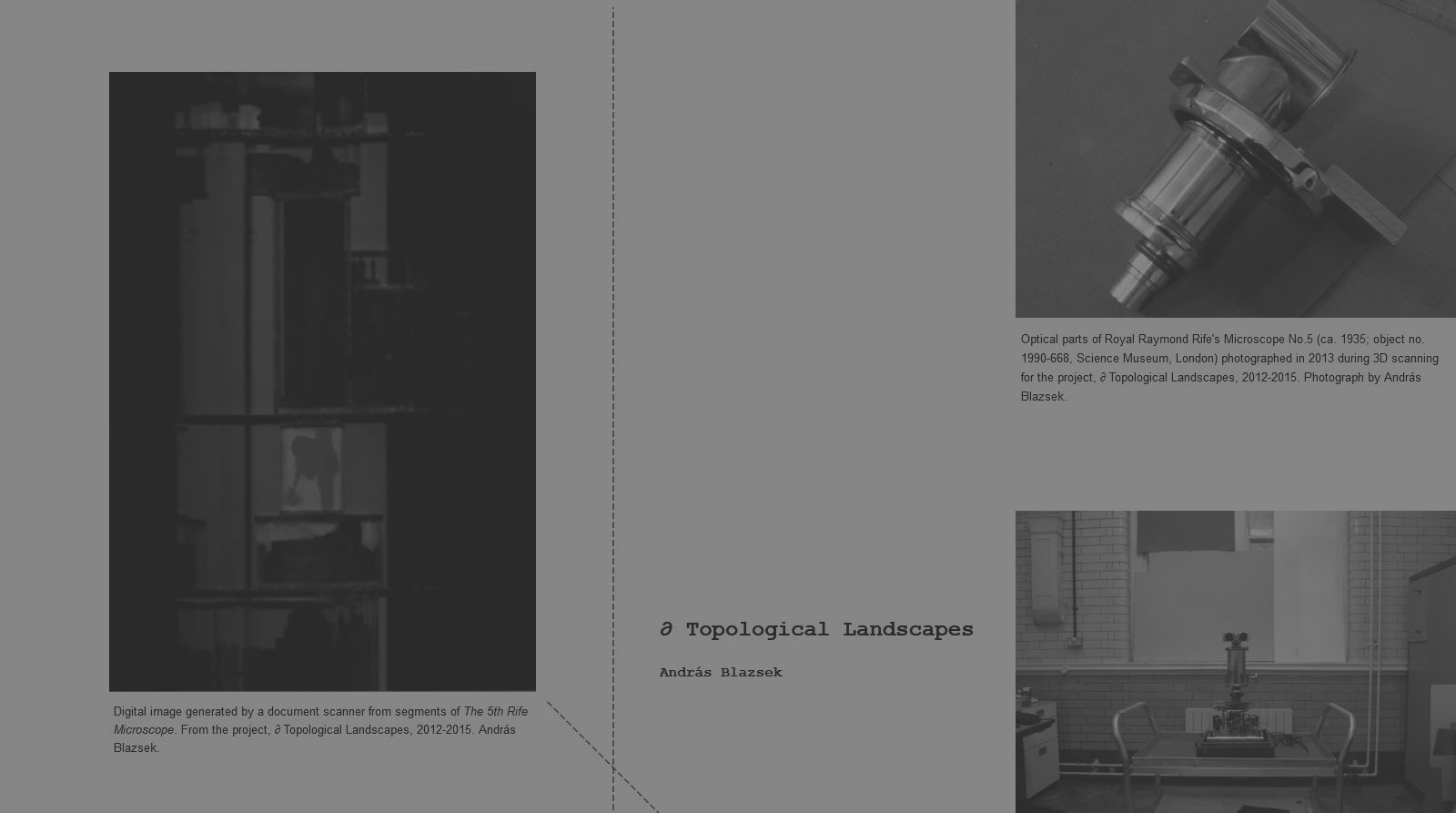∂ Topological Landscapes
ABSTRACT
∂ Topological Landscapes (2015) is a multisensory environment that comprises three projects, all based on research into the controversial healing instruments designed by Southern California inventor Royal Raymond Rife (Nebraska, 1888–California, 1971). Rife’s early twentieth-century scientific work involved light microscopy, frequency theory, and the concept of pleomorphism, which he applied to study formal differentiation in viral cells. One of Rife’s aims was to develop methods and mechanisms that would allow him to use frequencies to kill viruses.
∂ (curly d) is the symbol for ‘boundary’ in general topology. In this research, it is employed as a mathematical symbol that links the study of shifting material surfaces with an inquiry into the fluctuating borders between art and science. It posits that abandoned possibilities in scientific error and failed experiments may harbour other futures.
In its three projects, ∂ Topological Landscapes works with different
technologies of reproduction using 3D animation, 3D printed sculpture,
sonification, and prototype-making to explore findings from various
attempts to replicate Rife’s instruments. The necessary information for
creating these replications was gathered from the object archive of the
Science Museum of London and from the two former sites of the inventor’s
research: the Scripps Institute of Oceanography in La Jolla, San Diego,
and the Linda Vista Hospital in Los Angeles.
Click on the image to read the full article published in JAR 23.
Additionally, this website also presents a short text about the 3D printed microscope:
A Prismatic Compound Microscope,
and images from exhibitions in the Image Gallery.
